10 Jun 2016
Collections Storage Assistant, Alex Strachan, provides a behind the scenes look at how the longcase clock collection is stored when not on display.Collections Storage Assistant, Alex Strachan provides a look behind the scenes at how the longcase clock collection is stored when not on display.
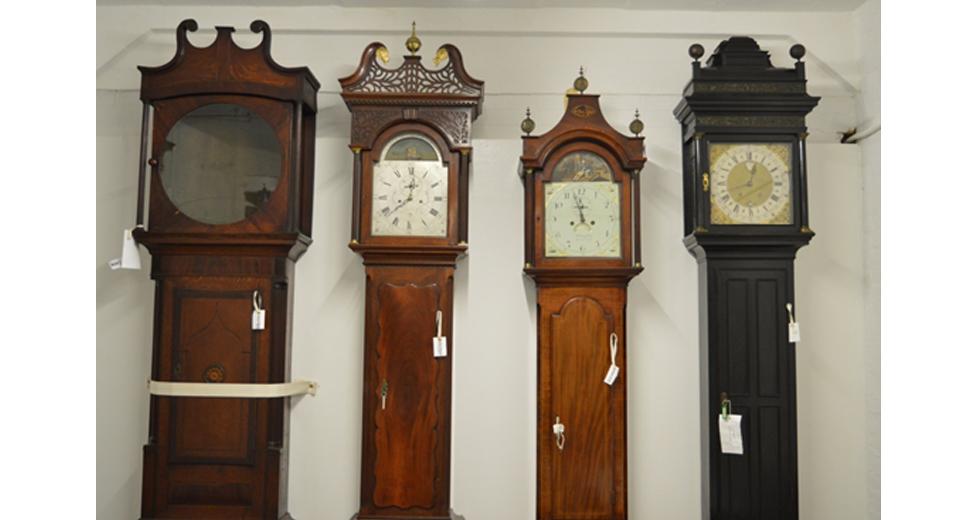
2015 was a busy year for the Collections Storage team at Royal Museums Greenwich. In preparation for the building of our new storage facility in South London, we began relocating our collections from old buildings due to be demolished and into newly refurbished stores. This has given us the exciting opportunity to redesign the way in which we store our objects with visitors in mind, ready for when our new facility opens in 2018.
One of many projects being carried out was the relocation of our longcase clock store. The old store had been in use for over 20 years and had gradually filled to capacity. The main issue we wanted to address in the design of the new store was improving access for the Art Object Handling team who retrieve and transport museum objects. In addition to this we wanted to create an open space that would be suitable for viewing the clocks when visited by staff and researchers.
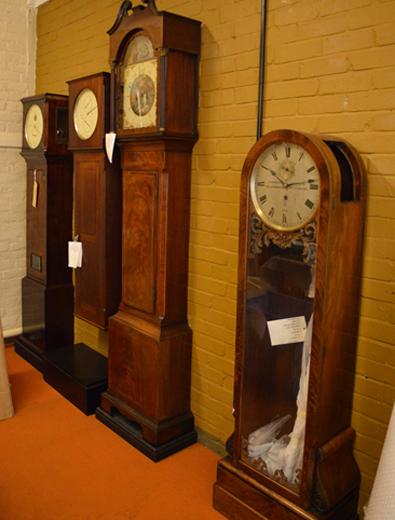
We started the planning of the new store with a research visit to the V&A’s purpose-built clock store at Blythe House. The team were very accommodating and we came away with lots of ideas on how best to utilise space in our new store. We were inspired by their use of purpose-built plinths with high backs to store the clocks off the floor and provide easy access for transport.
The new layout we decided on enabled this by positioning the clocks around the perimeter of the room on long plinths, leaving an open central floor space for manoeuvring objects. This method also allows for repositioning to accommodate clocks of variable shapes and sizes that will be added to the store in future. To facilitate the objects being secure yet easily removable, we decided to clad the brick walls of the new store in wood for fixing.
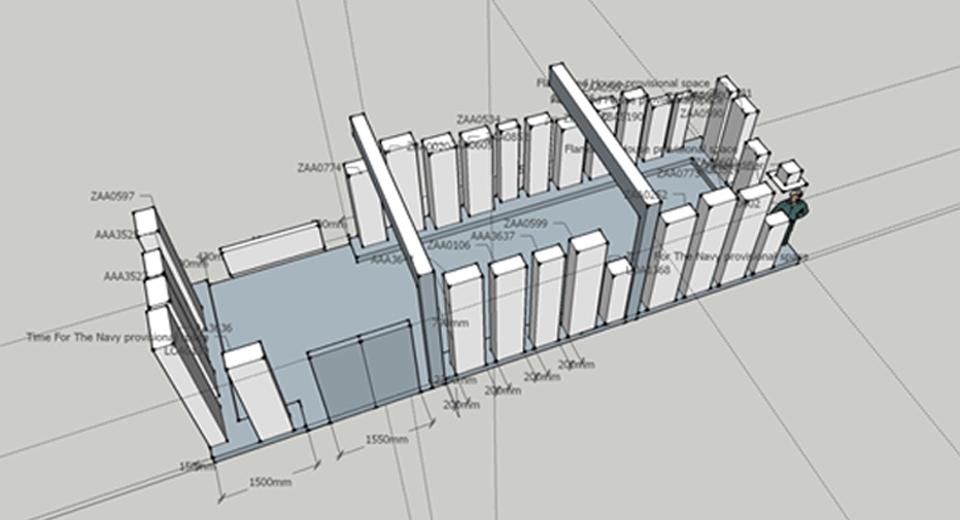
Myself and the Storage and Movement team worked with conservators and curators to design the layout. I began by creating a 3D model of the space and plotting the individual objects according to size and weight. Using a modelling program helped us to reshuffle the layout easily if needed and provided the builders with a scale drawing for construction. We then needed to decide on the right materials to create a suitable environment for storing longcase clocks.
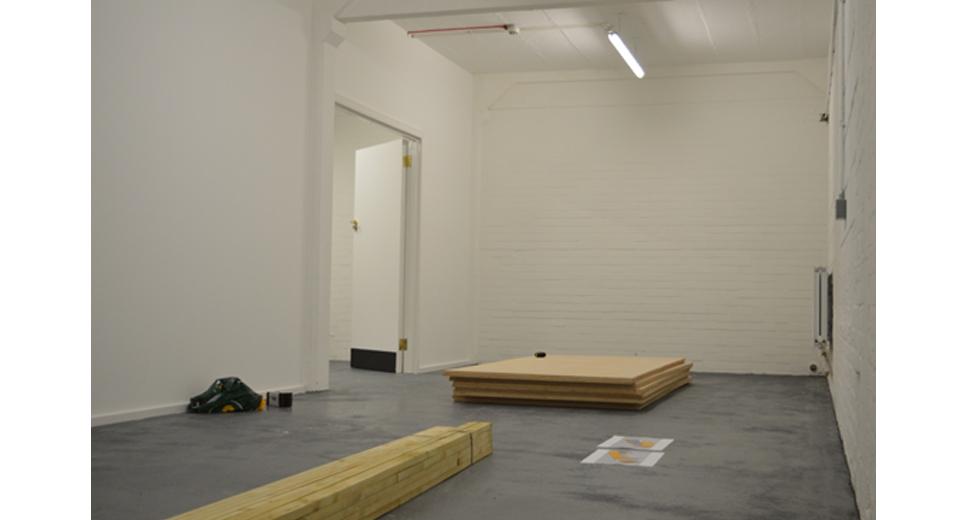
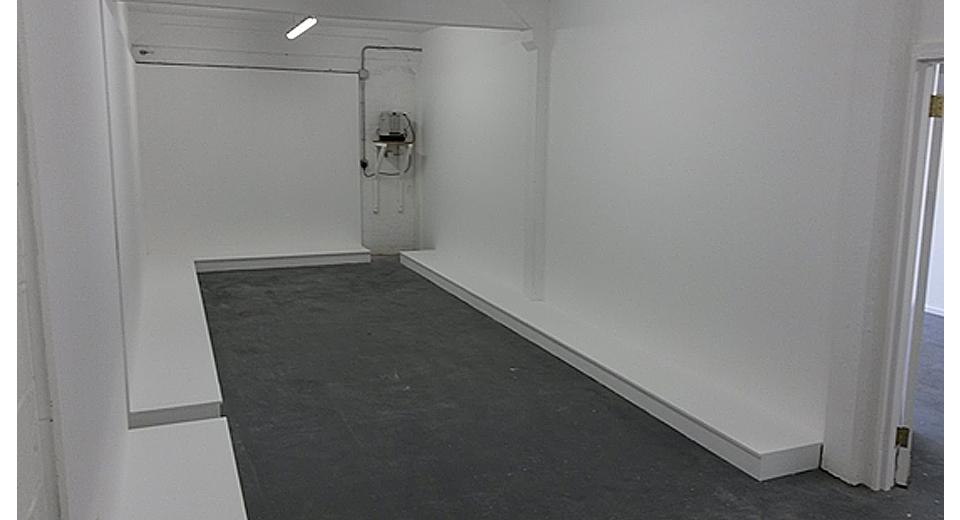
The brick walls of the new store were clad in plywood; strong enough support the weight of the clocks and robust enough to recurrently screw fixings into. We consulted Conservators on how to seal the plywood so as to reduce the amount of chemicals the objects would come into contact with. They recommended the use of a low VOC (volatile organic compound) paint and we allowed a period of time for the paint to off gas and coat the plinths in a water-based sealant. We considered the distance necessary between the objects and the room’s heat source (the radiator), and a dehumidifier was installed to stabilise the environment. Lastly, we decided to make the bases of the plinths accessible to check for pests underneath so we chose to have a removable front panel.
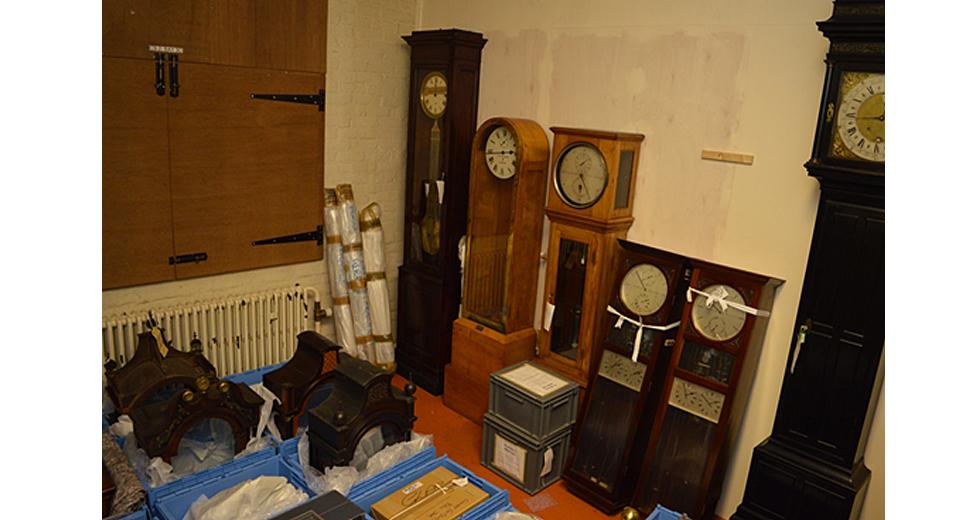
Once the new store had been built, the next stage was packing and moving the objects. In order to safely move the longcase clocks they would have to be emptied of their moving parts. The Curator of Horology (Rory McEvoy) and Conservator of Scientific Instruments (Anna Rolls) carefully removed and packed the pendulums, weights and other parts. Particular attention was paid to packing the movements as these include the delicate mechanisms that operate the clocks.
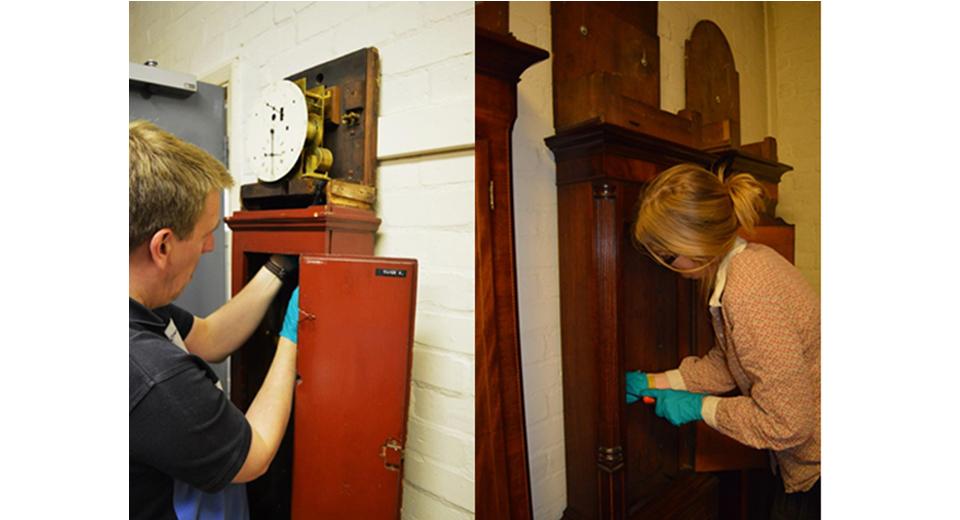
The museum’s team of Art Object Handlers then transported the empty clock trunks and crates packed with small parts to the new store. The old clock store was narrow and crowded with other objects so the trunks had to be carried out manually, transferred to padded sack truck and wheeled out to a van.
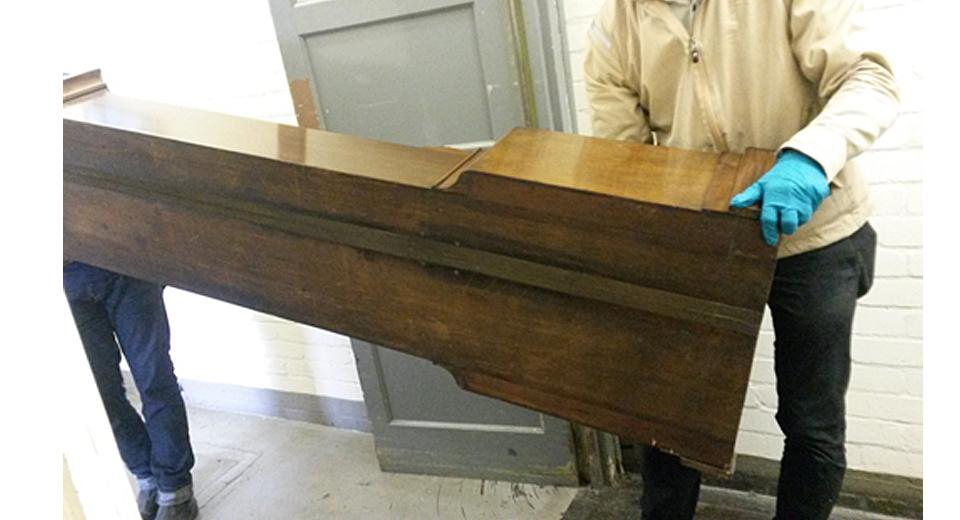
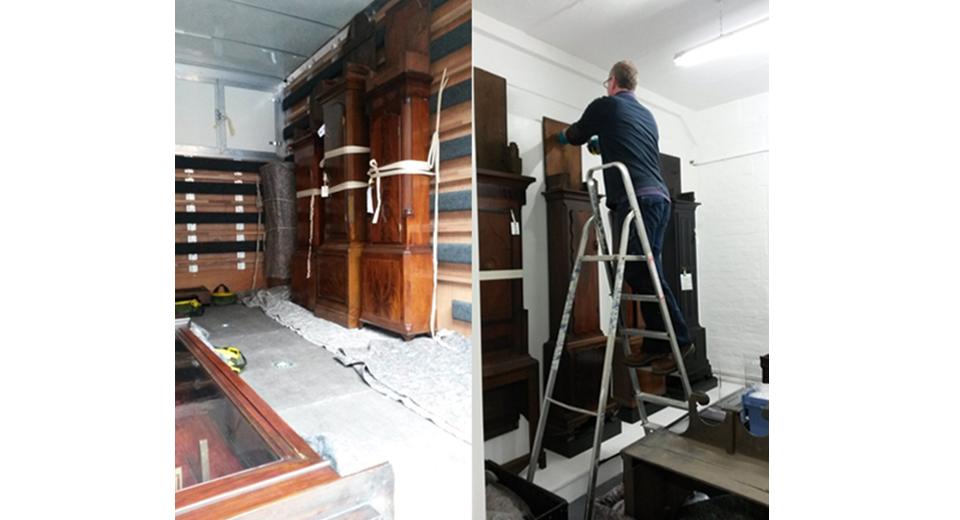
Once relocated to the new store, the Art & Object Handling team installed the trunks on the plinths, securing them to the plywood walls using existing fixing points on the objects. Using the scale drawing, positions were marked out beforehand and each clock was installed in its allotted space. This allowed for a smooth transition and avoided any unnecessary further movement of heavy objects.
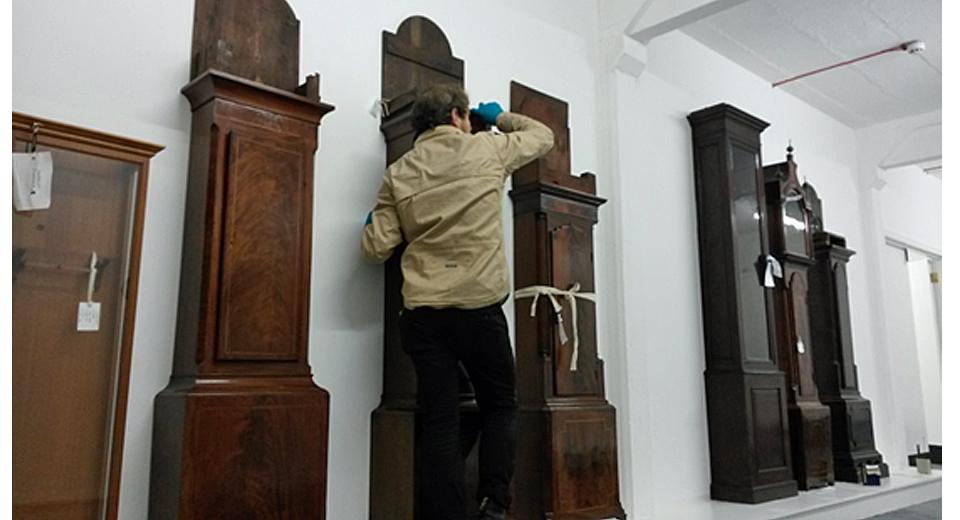
Finally, Rory and Anna reunited the clocks with their contents; installing the movements, pendulums and other working parts. This process was the most time-consuming (forgive the pun!) as the parts needed to be reassembled in precisely the right way in order for the clocks to function.
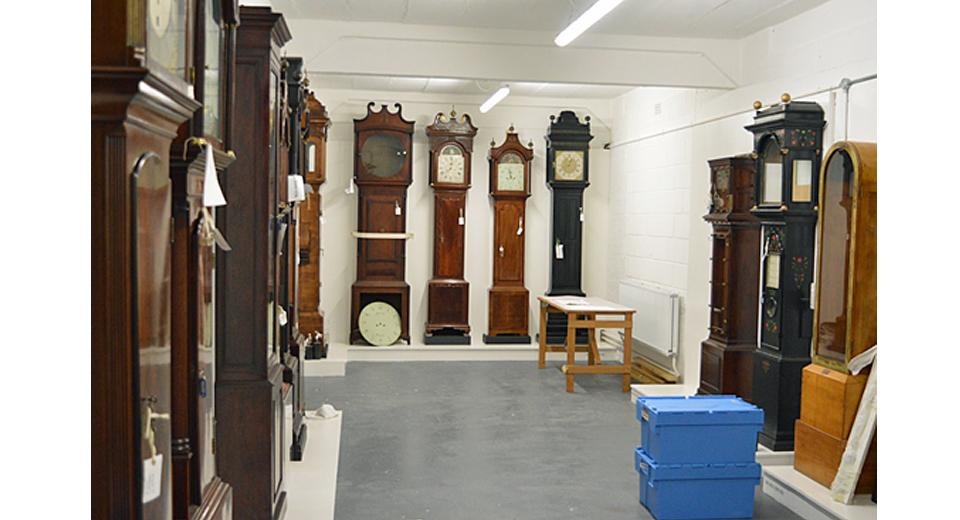
This project also provided space for objects previously kept as separate parts to be stored as a whole and operated by the Curator of Horology, Rory McEvoy. This included two complicated objects; Shortt master and slave clock systems No 40 and No 16. These are two versions of clocks that are driven by a vacuum suspended pendulum, operated by electrical impulses. The pendulums hang in heavy pressurised tanks which we mounted onto a sturdy wall in another new store.
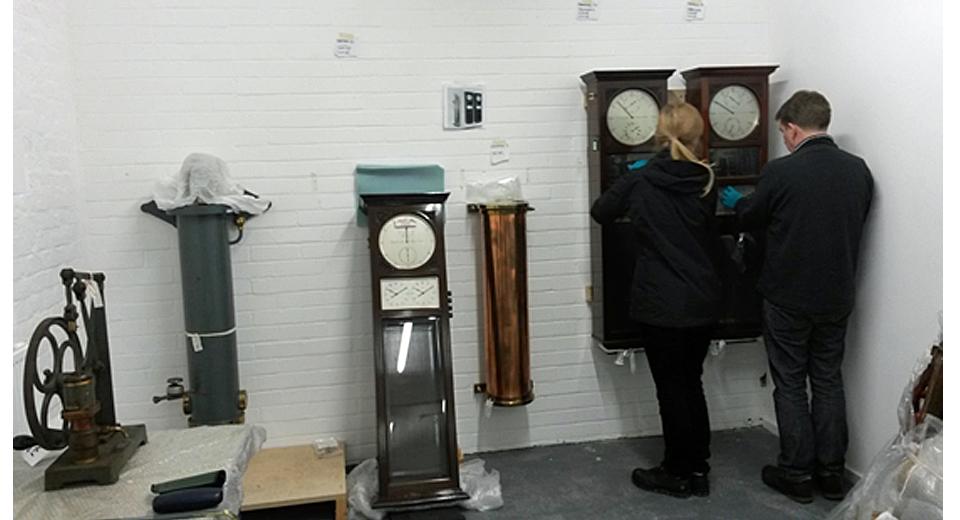
The new store provides the longcase clock collection with an ideal environment for storage and viewing. It is climate controlled, spacious and easily accessible to visitors. It has also allowed us to exercise better location control, updating over 200 records on our collections database for all the catalogued parts of the clocks. Most importantly of all it offers the opportunity to fully appreciate these objects when they are not on display. However, the most noticeable improvement from the old clock store is leaving behind the orange carpet and brown walls!
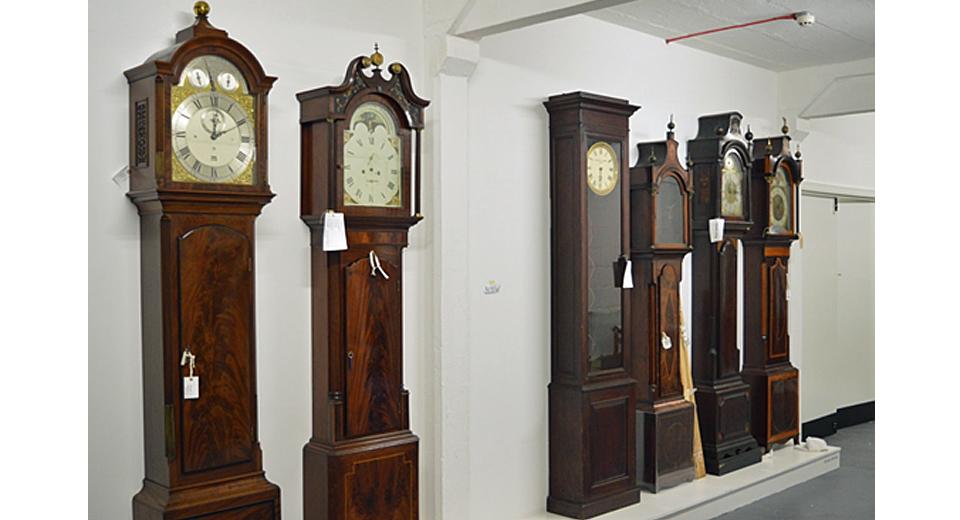
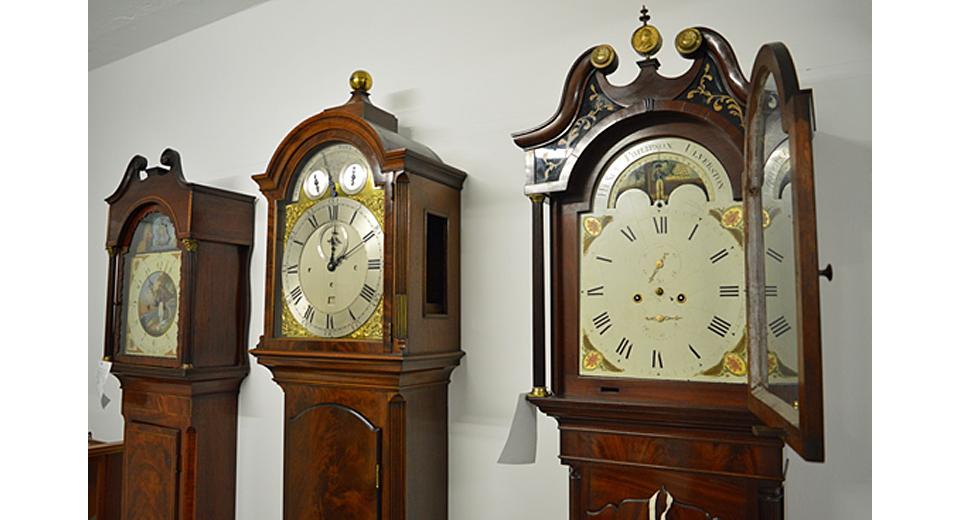
The longcase clock collection will not remain this way for long as Royal Museums Greenwich objects are regularly on the move. Some of these objects will be displayed in the Queens House when it re-opens in July 2016, and others will take their place to make way for the upcoming refurbishment of Flamsteed House. This highlights the need for our team to keep finding imaginative ways to make collections storage flexible and accessible.
*Please note that the Clock Store will be closed to visitors for a year from June 2016 during building work.